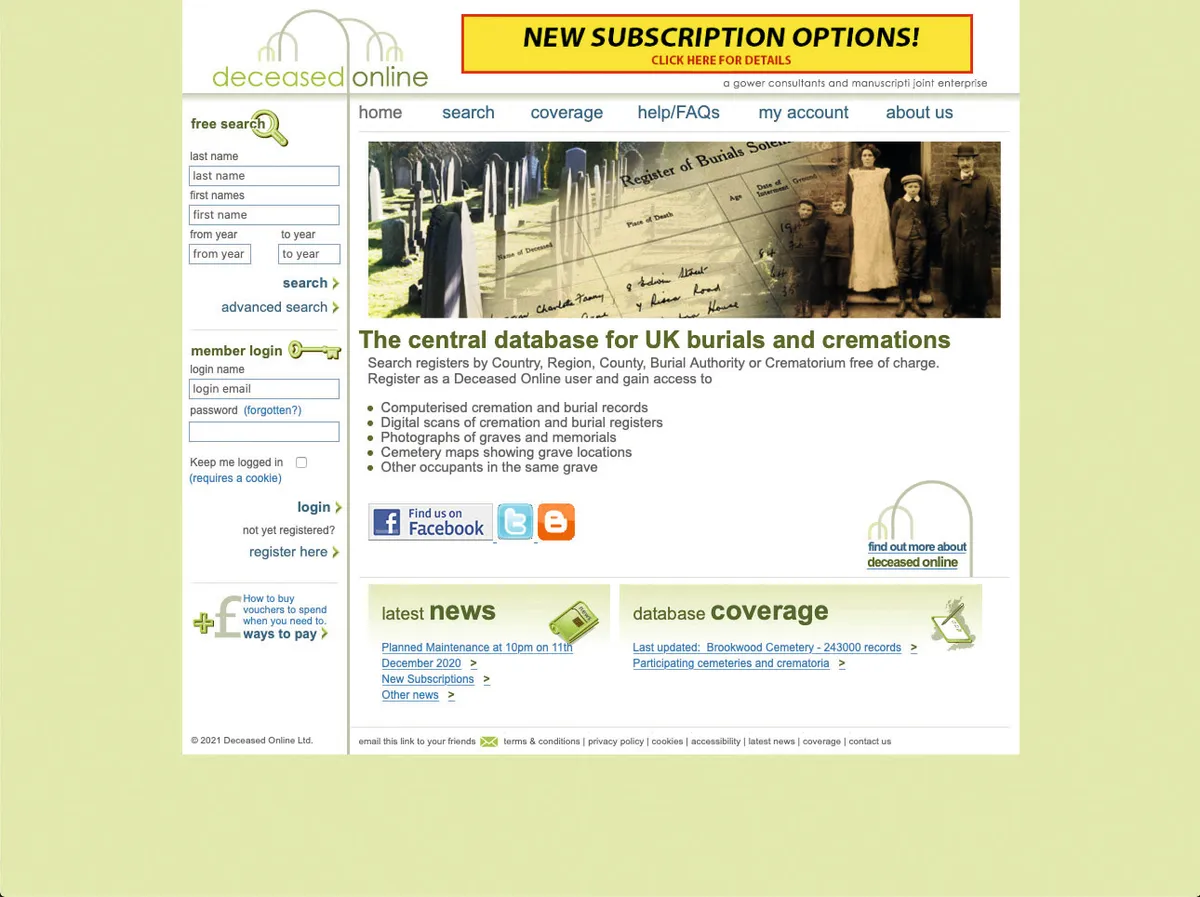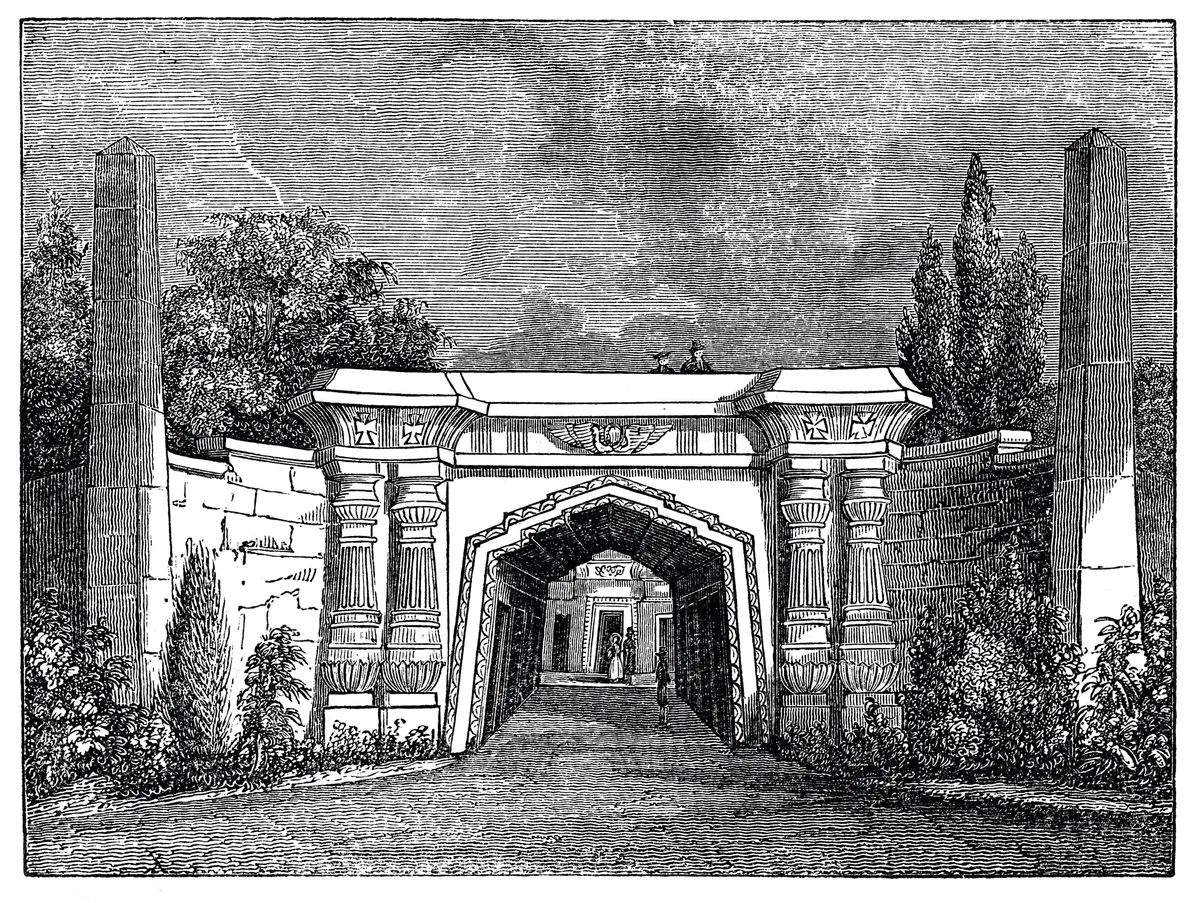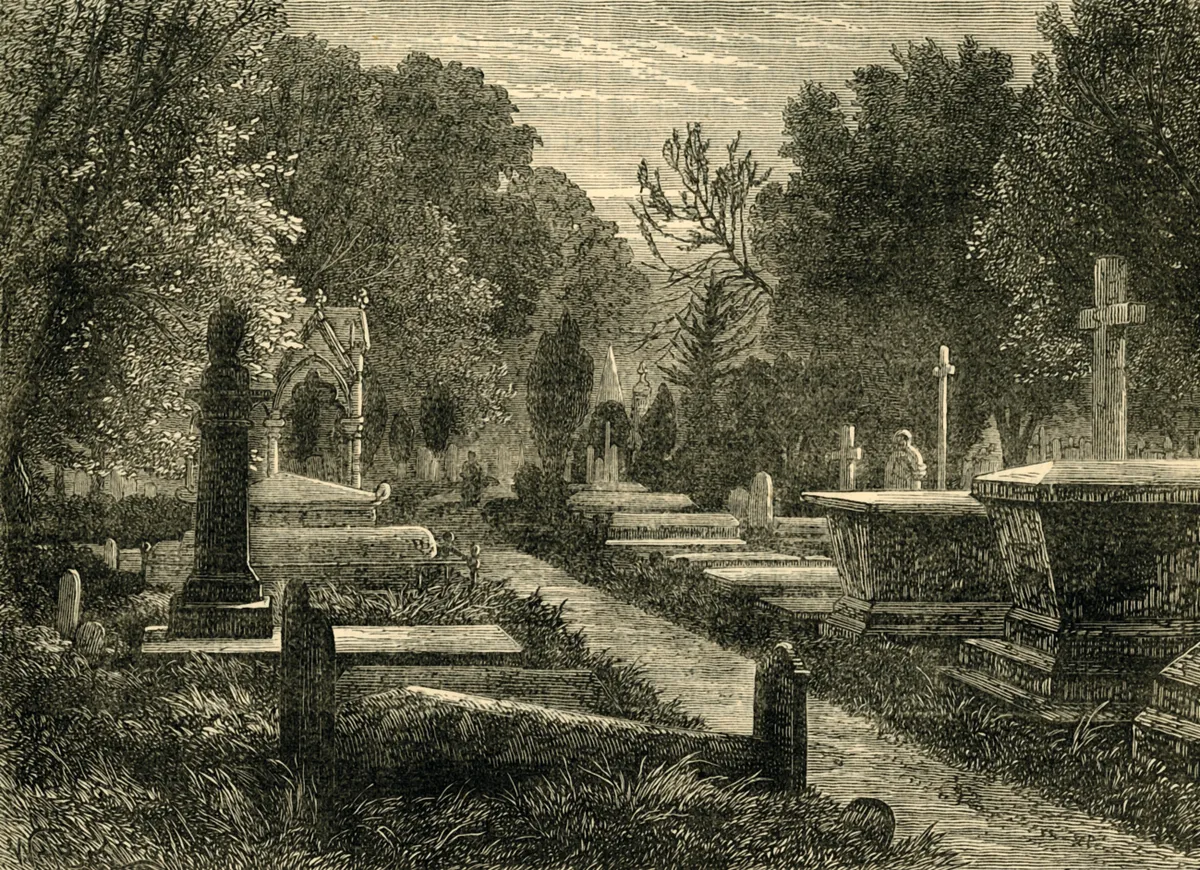Victorian cemeteries remain a familiar feature of our landscape. From London to Glasgow and Cardiff to Newcastle, we are never very far from one of these peaceful places with their crooked gravestones, silent statues… and perhaps a wandering family historian or two.
Indeed, many of us who spend time researching the lives of our ancestors are also interested in their deaths. Where were they buried? Was there a gravestone? And is it still there?
Where to find records for Victorian cemeteries online
Many larger Victorian cemeteries have information on their website that tells you how to go about accessing their records, often offering a search service in exchange for a fee. Local record offices are also a good place to look. Some of them have produced useful guidance to help researchers navigate burial records in the area, and you may also find transcriptions of the original burial registers and plans that reveal where particular plots are located.
Deceased Online

Cemeteries look after their own records, and the information that is recorded differs from place to place. Deceased Online is a valuable resource that works with cemeteries to digitise their records. You can search for an ancestor by name (and their year of death, if you know it) before paying a small fee to view any records that the database might hold. These records may tell you who bought the plot, when it was purchased and how much it cost, as well as who is buried there and what sort of grave it was.
Famous Victorian cemeteries with records on Deceased Online include Brompton, Highgate and Kensal Green cemeteries in London, Brookwood Cemetery in Woking, Surrey.
Ancestry
The subscription website has burial records for a number of London cemeteries including Paddington Old Cemetery in its Westminster collection.
Findmypast
This subscription website has early records from the famous Greyfriars Cemetery in Edinburgh, 1658-1700.
Find a Grave
Although not strictly burial records as such, the free website Find a Grave has millions of entries showing who was buried where and many of these relate to Victorian cemeteries from around the UK.
Billion Graves
Similar to Find a Grave, this free website also includes details of burial headstones from across the globe including many from Victorian cemeteries across the UK.
Why were Victorian cemeteries established?
For many years, most people in Britain were buried in churchyards. In the Victorian age, however, these traditional burial grounds became overcrowded – particularly in sprawling industrial cities like London.
People were also concerned about the unsanitary conditions of churchyards where many decomposing bodies were packed into a small space. Some even believed that the stench of rotting corpses could poison the unlucky neighbours living nearby.
People were also concerned about the unsanitary conditions of churchyards
In 1838 a journalist described the untenable situation in London: “The state of the churchyards of the metropolis is at once disgusting and dangerous… the population of London is exposed to the pestilent miasma of our burial grounds, situated as they are in the very midst of the most densely crowded neighbourhoods.”
It was clear that new cemeteries were needed. In 1832 the Government passed a bill that encouraged private companies to establish new burial grounds on the outskirts of London. As a result, seven were opened during the following decade, including the well-known cemeteries at Highgate and Kensal Green. Collectively, these famous Victorian cemeteries became known as the ‘Magnificent Seven’, and they certainly lived up to the grandiose nickname.
Inspired by the famous Père Lachaise Cemetery in Paris, these immaculately landscaped spaces boasted grand catacombs, ornate chapels and the very latest architectural trends.
At Highgate, for example, the contemporary craze for ancient Egyptian design was reflected by the cemetery’s spectacular ‘Egyptian Avenue’. There were also mature trees and shaded pathways where people could enjoy peaceful, reflective walks – a far cry from the overcrowded churchyards of the capital.

Only the upper and middle classes could afford to be buried in places like this, and they certainly became very fashionable. A prominent plot within the cemetery indicated wealth and status, so class divisions were maintained even in death. So popular was Kensal Green that it was referenced in a well-known poem by GK Chesterton, which ends with the lines: “For there is good news yet to hear and fine things to be seen, / Before we go to Paradise by way of Kensal Green.”
Only the upper and middle classes could afford to be buried in places like this
London was not the only place that needed new cemeteries, however. In cities across Britain, many new private cemeteries opened in the 1830s – from Arnos Vale in Bristol and Newcastle General to Glasgow Necropolis and Key Hill, Birmingham. Just like in London, those with more money could pay for conspicuous plots with ornate memorials, and secure their plot in perpetuity. Our forebears who were less well off would buy a more modest location on the edge of the cemetery, perhaps leased for as little as five years.
From the 1840s, local authorities started to open their own municipal cemeteries along similar lines, funded by public money. The emphasis on creating a beautiful and peaceful environment was upheld, and – just like many private cemeteries – separate areas were allocated for those of different faiths.
How to identify graves in Victorian cemeteries

Once you have located the grave of your forebear, it might be time to pay them a visit. While cemetery records are valuable sources of information, a grave has its own stories to tell.
For instance, the Victorians used a great deal of symbolism in their cemetery architecture. One of the symbols you might spot carved into a headstone or memorial is an anchor; this symbolises hope and steadfastness, and was also used for the graves of sailors. If you see an angel pointing upwards, it represents the ascension of the soul; if pointing downwards, it can indicate a sudden death. A column represents a person’s life, so a ‘broken’ column indicates a life cut short. A daisy represents innocence, so can often be seen on children’s graves. An hourglass is a symbol of passing time; wings are sometimes added to remind the viewer that ‘time flies’. Finally you will often see urns that are draped with a carved cloth, symbolising mourning and the veil between life and death.
If you see an angel pointing upwards, it represents the ascension of the soul
Not all graves consist of a headstone. Some might be marked with a sculpture instead, or you may even come across a mausoleum – a small building, often designed to resemble a classical temple, which holds a group of coffins. Slightly less opulent is a ‘chest’ tomb – the body is typically buried beneath the stone chest, rather than inside it. Some cemeteries have catacombs, too – underground vaults designed to store rows of coffins on shelves. At Kensal Green Cemetery the catacombs even had a hydraulic lift that was used to lower down bodies.
If you find an ancestor’s grave, look carefully at those that surround it. You can sometimes find clusters of other family graves close by, and inscriptions containing names and dates may shed new light on branches of your family tree that you have not yet encountered.




